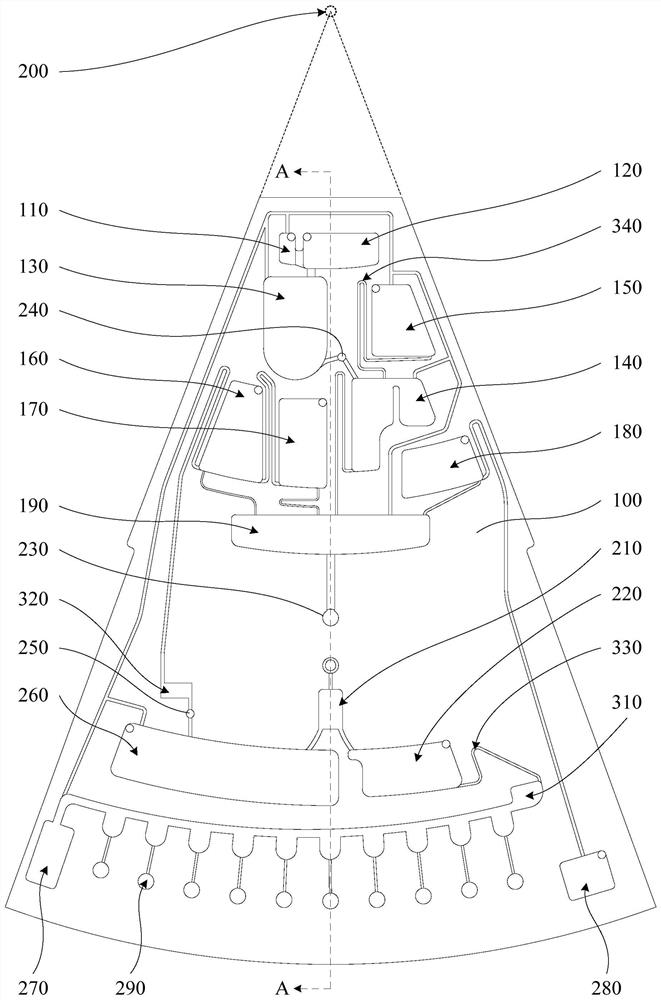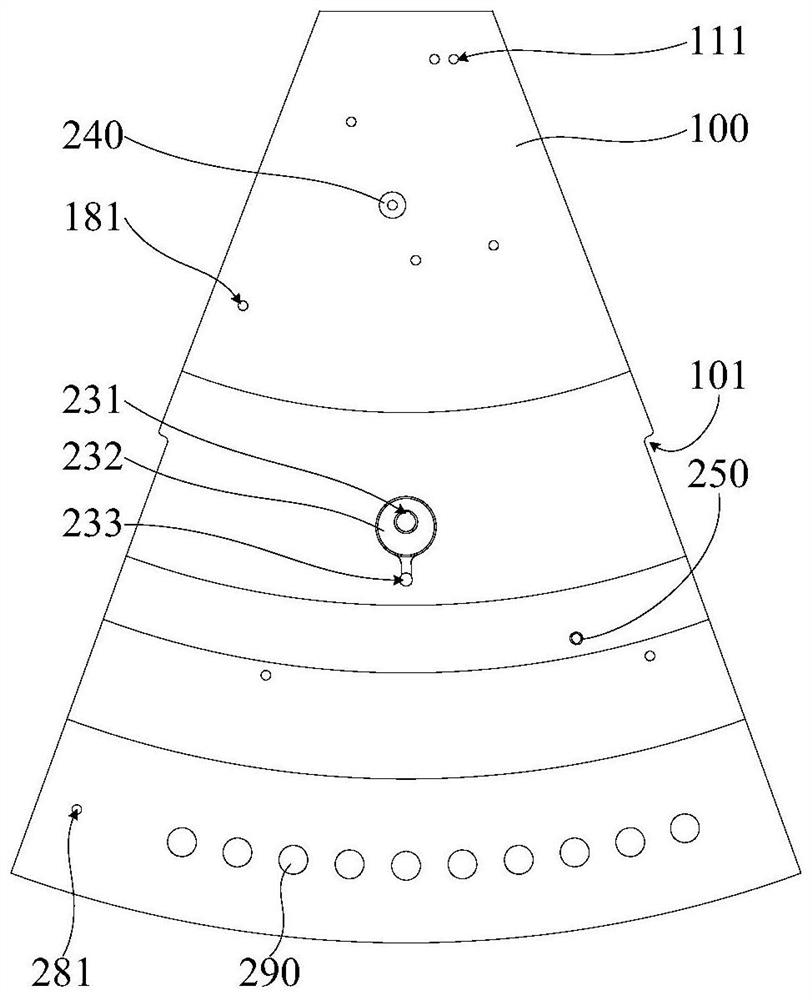Micro-fluidic chip, kit and application method of kit
A technology of microfluidic chips and storage chambers, which is applied in chemical instruments and methods, biochemical equipment and methods, and laboratory containers, etc., and can solve problems such as complex operations, low accuracy, and low stability
- Summary
- Abstract
- Description
- Claims
- Application Information
AI Technical Summary
Problems solved by technology
Method used
Image
Examples
Embodiment 1
[0034] Primer probes use the combinations shown in Table 2 below:
[0035] FAM channel HEX channel ROX channel No. 1 reaction chamber salmonella Shigella Internal standard No. 2 reaction chamber Staphylococcus aureus Listeria monocytogenes Internal standard No. 3 reaction chamber Vibrio cholerae group O1 Vibrio cholerae group O139 Internal standard No. 4 reaction chamber Vibrio parahaemolyticus Vibrio vulnificus Internal standard Reaction Chamber No. 5 Mimic Vibrio Vibrio alginolyticus Internal standard No. 6 reaction chamber Campylobacter jejuni Campylobacter coli Internal standard Reaction Chamber No. 7 Escherichia coli O157 Escherichia coli O104 Internal standard Reaction Chamber No. 8 Yersinia pseudotuberculosis Yersinia enterocolitica Internal standard Reaction Chamber No. 9 Aeromonas hydrophila Clostridium perfringens Internal standard Reaction Chamber No....
Embodiment 2
[0043] A microfluidic chip was used to detect 21 samples, including 20 positive samples for food-borne pathogens and 1 negative sample. Sample No. 1 is a positive sample of Salmonella, sample No. 2 is a positive sample of Shigella, sample No. 3 is a positive sample of Staphylococcus aureus, sample No. 4 is a positive sample of Listeria monocytogenes, and sample No. 5 is a positive sample of Vibrio cholerae O1 Group positive sample, sample No. 6 is a positive sample of Vibrio cholerae O139 group, sample No. 7 is a positive sample of Vibrio parahaemolyticus, sample No. 8 is a positive sample of Vibrio vulnificus, sample No. 9 is a positive sample of Vibrio mimicus, and sample No. 10 It is a positive sample of Vibrio alginolyticus, sample No. 11 is a positive sample of Campylobacter jejuni, sample No. 12 is a positive sample of Campylobacter coli, sample No. 13 is a positive sample of E. coli O157, sample No. 14 is a positive sample of E. coli O104, and No. 15 The sample was posi...
Embodiment 3
[0049] Use the microfluidic chip to detect the mixed plasmid samples of 20 kinds of foodborne pathogenic bacteria, and dilute the plasmid samples according to a certain concentration gradient to 105copies / ml, 104copies / ml, 103copies / ml, 102copies / ml, 101copies / ml5 concentrations for sensitivity experiments. The detection was carried out according to the operation flow in Example 1, and the detection results are shown in Table 4 below.
[0050]
[0051]
[0052] Table 4
[0053] The test results show that the microfluidic kit for detecting 20 kinds of foodborne pathogenic bacteria described in this application has high sensitivity to all 20 kinds of foodborne pathogenic bacteria, reaching 100 copies / ml.
PUM
 Login to View More
Login to View More Abstract
Description
Claims
Application Information
 Login to View More
Login to View More - R&D
- Intellectual Property
- Life Sciences
- Materials
- Tech Scout
- Unparalleled Data Quality
- Higher Quality Content
- 60% Fewer Hallucinations
Browse by: Latest US Patents, China's latest patents, Technical Efficacy Thesaurus, Application Domain, Technology Topic, Popular Technical Reports.
© 2025 PatSnap. All rights reserved.Legal|Privacy policy|Modern Slavery Act Transparency Statement|Sitemap|About US| Contact US: help@patsnap.com



